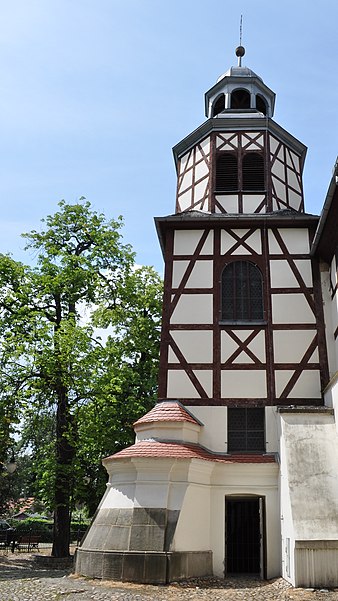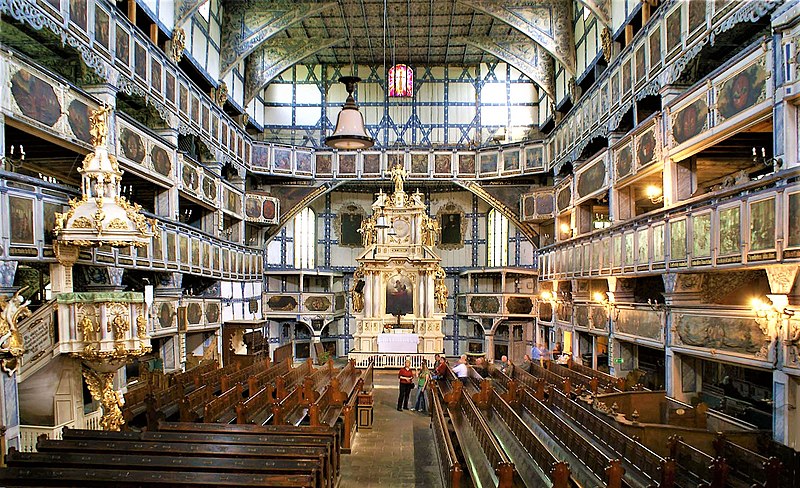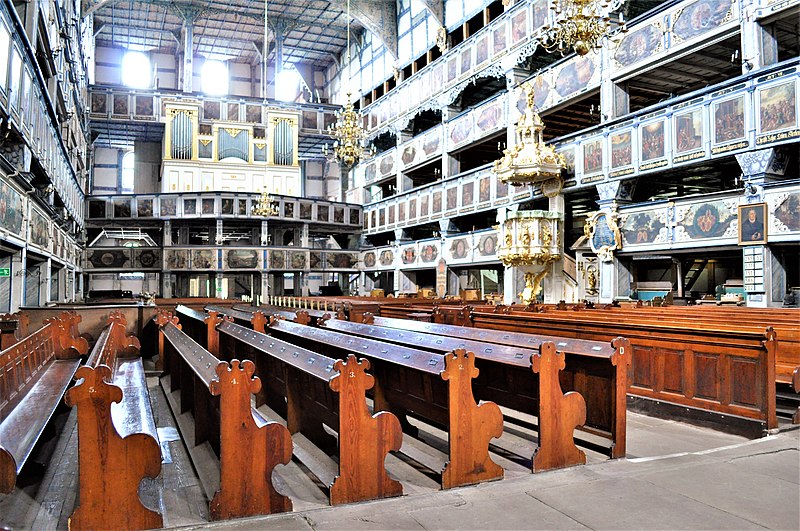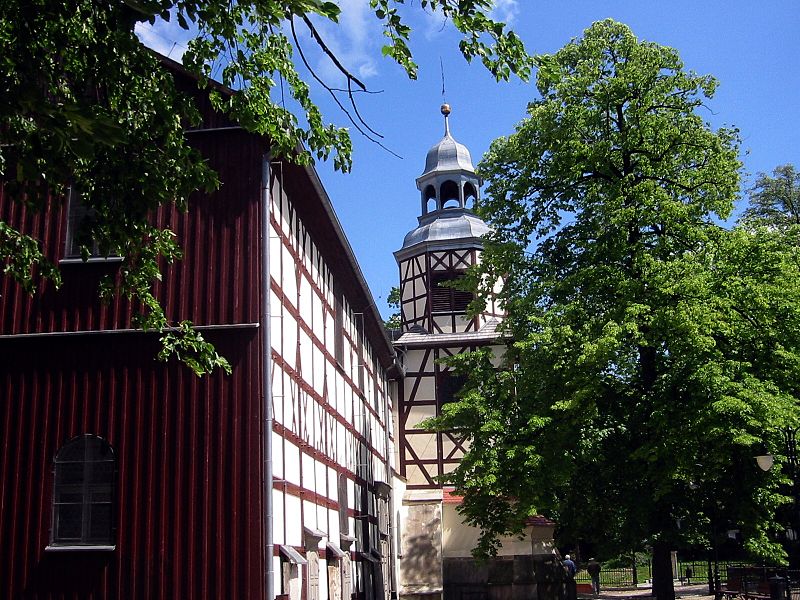Church of Peace, Jawor
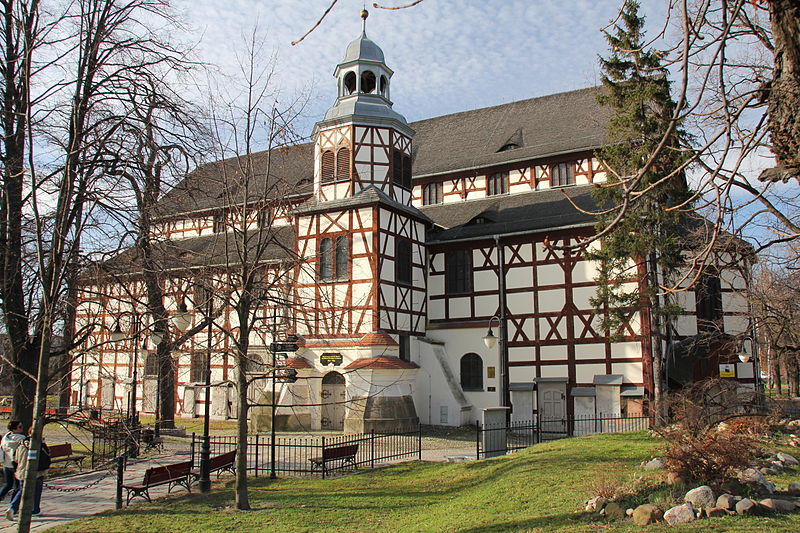
Facts and practical information
Nestled in the quaint town of Jawor, Poland, the Church of Peace stands as a remarkable historical edifice. Constructed in the mid-17th century, specifically in 1654-1655, it is one of the largest wooden churches in Europe, showcasing the unique Silesian wooden church architecture. This awe-inspiring structure was built as a result of the Peace of Westphalia, which concluded the Thirty Years' War and allowed the Lutherans in the Roman Catholic parts of Silesia to erect three churches, provided they were constructed outside the city walls, built within a year, and made primarily from wood and clay.
The Church of Peace in Jawor, alongside its counterpart in Świdnica, has been recognized as a UNESCO World Heritage Site, a testament to its cultural and architectural significance. It is distinguished by its plain exterior, which belies the richly decorated interior. Visitors are often captivated by the intricate wooden carvings, colorful paintings, and opulent galleries that adorn the church, reflecting the craftsmanship and religious fervor of the era.
The church can accommodate up to 6,000 people, a feature that illustrates the importance of communal worship and the large Lutheran community that once thrived in the region. Its bell tower, separate from the main body of the church, adds to the unique composition of the structure and offers a picturesque view against the backdrop of Jawor's landscapes.
Church of Peace – popular in the area (distance from the attraction)
Nearby attractions include: Jawor Castle, Słup Lake, Muzeum Gross-Rosen, Rezerwat Wąwóz Myśliborski.


